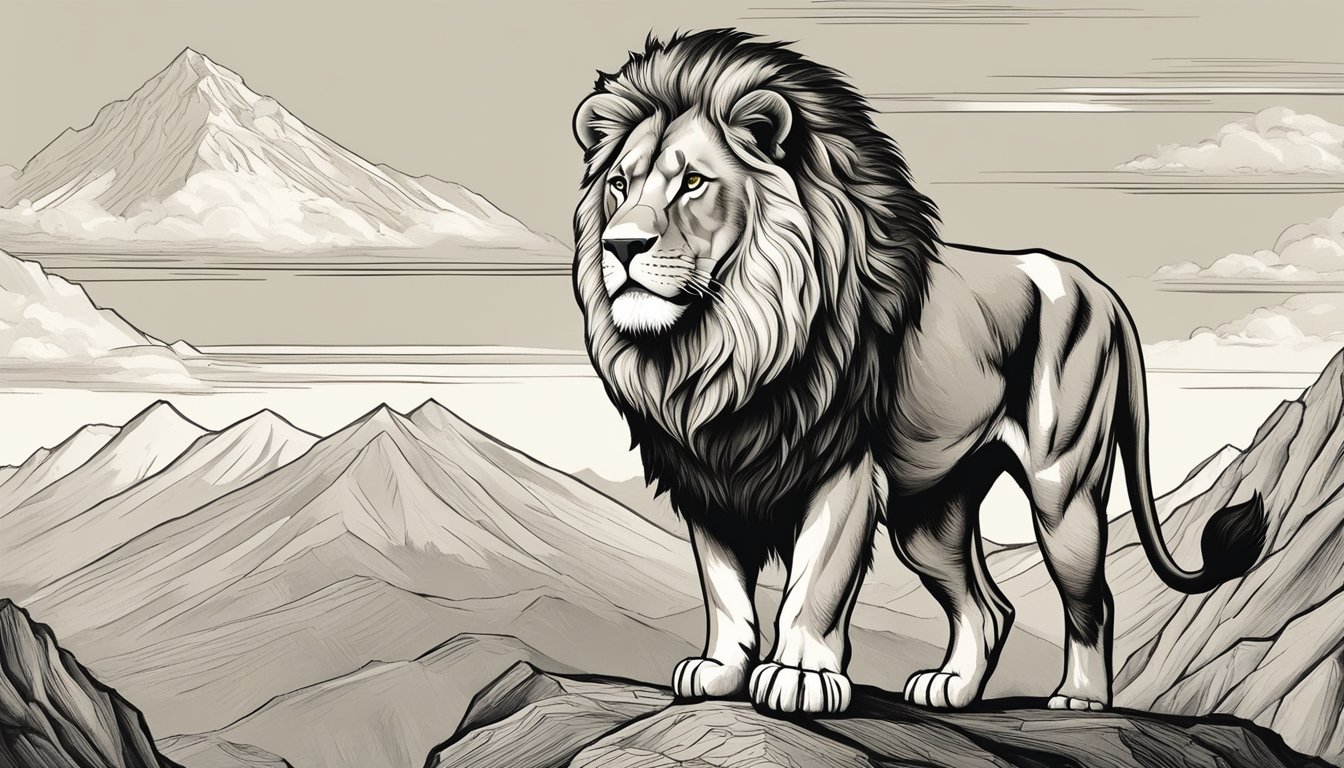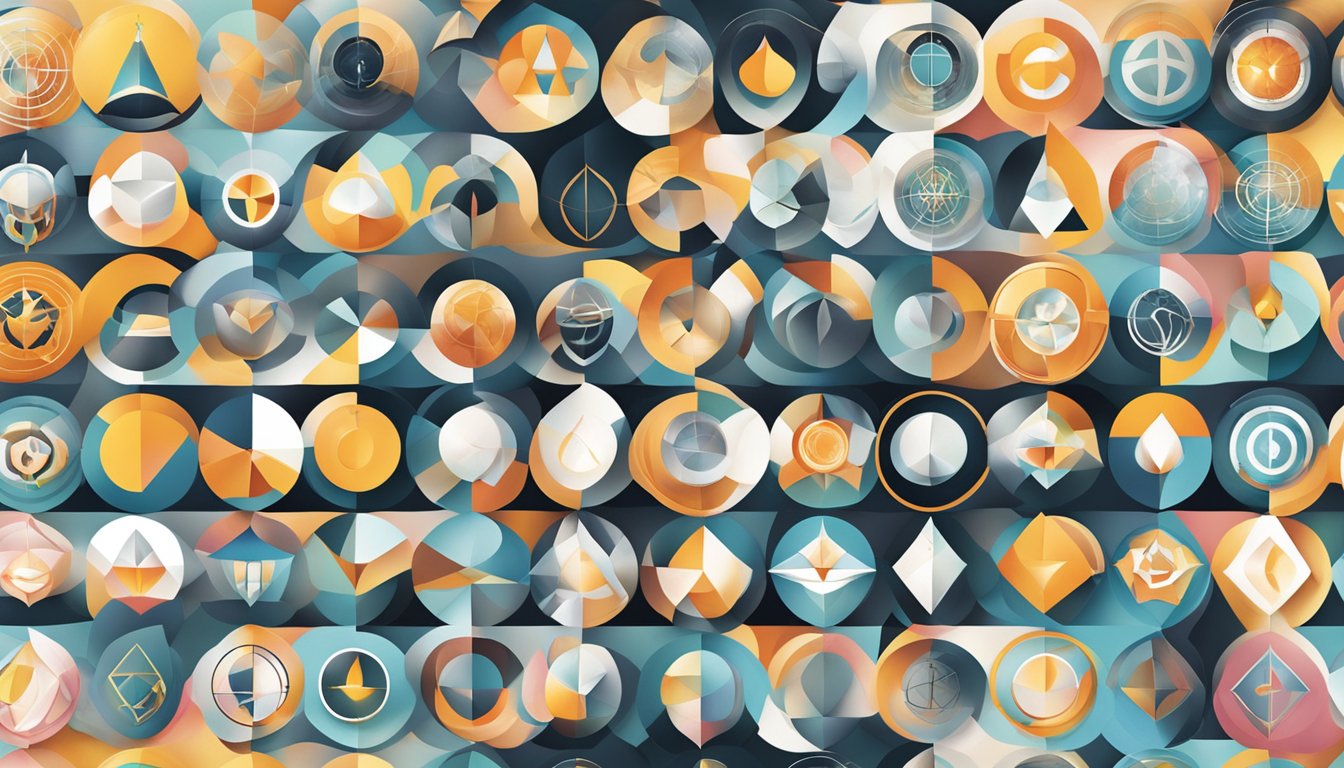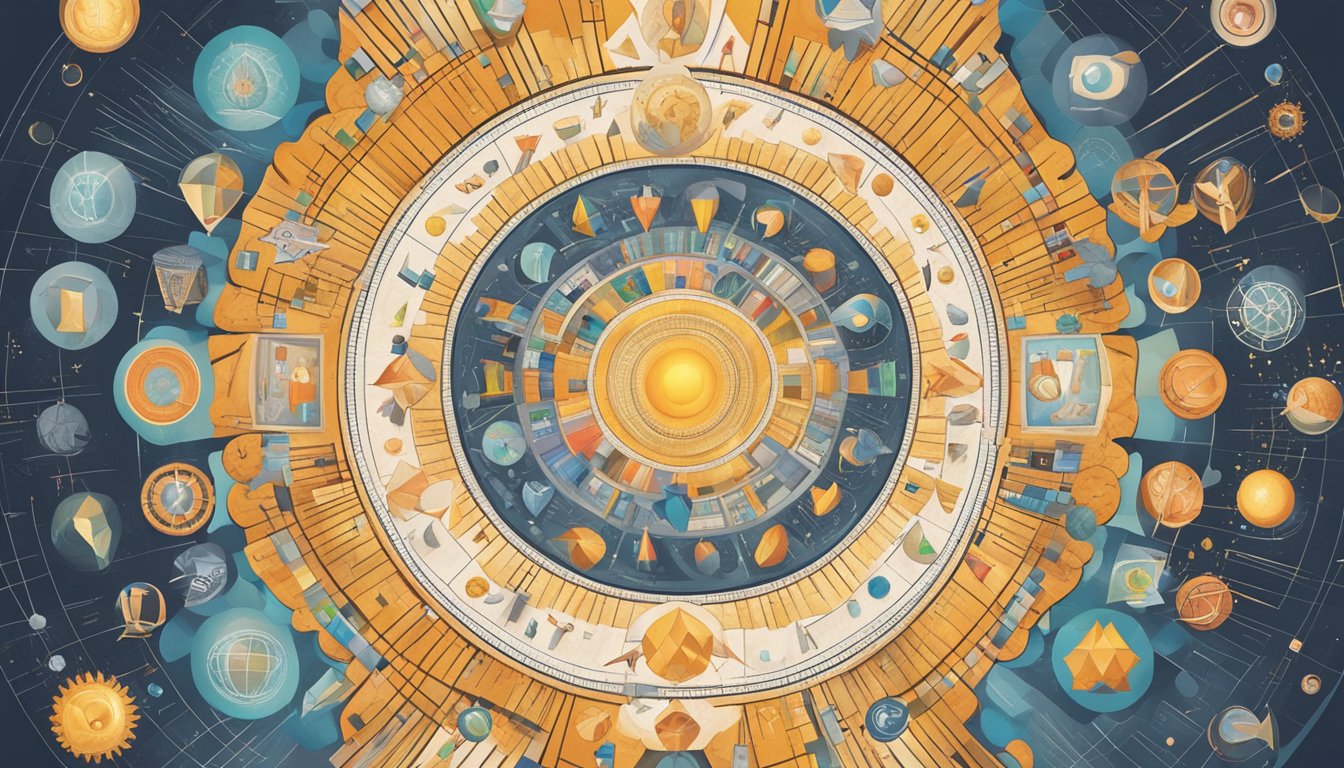If you’re a marketer or branding professional, you’ve probably heard of brand archetypes. But what are they exactly, and why are they important? In short, brand archetypes are a set of universal, symbolic characters or personas that represent different aspects of human nature and can be used to create a unique and memorable brand identity. By tapping into these archetypes, you can create a brand that resonates with your audience on a deeper, emotional level.

There are 12 core brand archetypes, each with its own set of characteristics, values and traits. These archetypes have been used by some of the world’s most successful brands to create a distinctive brand identity that sets them apart from their competitors. Understanding these archetypes and how to apply them to your brand strategy can help you create a brand that is authentic, compelling and memorable.
In this article, we’ll take a closer look at brand archetypes, what they are, how they work and how you can use them to create a powerful brand identity. We’ll explore the 12 core archetypes in detail and provide examples of brands that have successfully applied them to their branding and marketing strategies. We’ll also answer some frequently asked questions about brand archetypes and provide tips on how to use them effectively.
Understanding Brand Archetypes

The Concept of Archetypes
Brand archetypes are a set of universal, symbolic characters or personas that represent a specific set of values, traits, and behaviours. These archetypes are derived from the concept of archetypes in psychology, which was first introduced by the Swiss psychiatrist Carl Jung.
Archetypes are essentially inherited mental images or patterns that are universally present in the collective unconscious of all human beings. They are a fundamental part of human nature and represent the basic human experiences that are common to all cultures and societies.
Carl Jung’s Influence
Carl Jung was one of the most influential psychologists of the 20th century, and his work on archetypes has had a significant impact on the field of psychology and beyond. Jung believed that archetypes were a fundamental part of the human psyche and that they played a crucial role in shaping our thoughts, feelings, and behaviours.
Jung’s work on archetypes has been particularly influential in the field of branding. Marketers and advertisers have used his ideas to create brand personalities that resonate with consumers on a deep, emotional level.
The Role of Archetypes in Branding
Brand archetypes provide a powerful framework for creating a brand personality that resonates with consumers. By identifying the key values, traits, and behaviours associated with a particular archetype, marketers can create a brand that is instantly recognisable and memorable.
There are twelve primary brand archetypes, each with its own set of characteristics and values. These include the Innocent, the Explorer, the Sage, the Hero, the Outlaw, the Magician, the Regular Guy/Girl, the Lover, the Jester, the Caregiver, the Creator, and the Ruler.
By understanding the archetypes and their associated values, marketers can create a brand that appeals to the emotions and desires of their target audience. This can help to build a strong emotional connection between the brand and its customers, which can lead to increased loyalty, engagement, and sales.
Overall, brand archetypes are a powerful tool for creating a brand personality that resonates with consumers. By tapping into universal human experiences and emotions, marketers can create a brand that is instantly recognisable and memorable.
The 12 Core Brand Archetypes

When it comes to branding, it’s important to understand the core archetypes that can help you connect with your target audience. These archetypes are based on the work of psychologist Carl Jung and have been used by many successful brands to create a strong identity and connect with customers.
The Innocent
The Innocent archetype represents purity, simplicity, and optimism. Brands that embody this archetype often use bright colours and simple designs to convey a sense of innocence and naivety. Innocent is a great archetype for brands that want to appeal to families and children.
The Sage
The Sage archetype represents wisdom, knowledge, and experience. Brands that embody this archetype often use educational content and authoritative messaging to convey a sense of expertise and trustworthiness. Sage is a great archetype for brands that want to appeal to professionals and academics.
The Explorer
The Explorer archetype represents adventure, discovery, and independence. Brands that embody this archetype often use bold imagery and adventurous messaging to convey a sense of excitement and exploration. Explorer is a great archetype for brands that want to appeal to thrill-seekers and adventurers.
The Ruler
The Ruler archetype represents power, authority, and control. Brands that embody this archetype often use regal imagery and authoritative messaging to convey a sense of dominance and leadership. Ruler is a great archetype for brands that want to appeal to high-end consumers and those who value luxury.
The Creator
The Creator archetype represents innovation, imagination, and originality. Brands that embody this archetype often use artistic designs and creative messaging to convey a sense of uniqueness and originality. Creator is a great archetype for brands that want to appeal to artists and creatives.
The Caregiver
The Caregiver archetype represents compassion, empathy, and nurturing. Brands that embody this archetype often use warm colours and caring messaging to convey a sense of empathy and support. Caregiver is a great archetype for brands that want to appeal to caregivers and those who value kindness and compassion.
The Jester
The Jester archetype represents humour, playfulness, and spontaneity. Brands that embody this archetype often use playful designs and humorous messaging to convey a sense of fun and entertainment. Jester is a great archetype for brands that want to appeal to those who value humour and lightheartedness.
The Rebel
The Rebel archetype represents non-conformity, individuality, and freedom. Brands that embody this archetype often use edgy designs and rebellious messaging to convey a sense of non-conformity and individuality. Rebel is a great archetype for brands that want to appeal to those who value independence and self-expression.
The Lover
The Lover archetype represents passion, sensuality, and intimacy. Brands that embody this archetype often use romantic designs and passionate messaging to convey a sense of intimacy and desire. Lover is a great archetype for brands that want to appeal to those who value romance and passion.
The Hero
The Hero archetype represents bravery, courage, and strength. Brands that embody this archetype often use heroic imagery and empowering messaging to convey a sense of strength and courage. Hero is a great archetype for brands that want to appeal to those who value strength and resilience.
The Magician
The Magician archetype represents transformation, mystery, and magic. Brands that embody this archetype often use mystical designs and transformative messaging to convey a sense of wonder and magic. Magician is a great archetype for brands that want to appeal to those who value transformation and self-discovery.
The Everyman
The Everyman archetype represents relatability, authenticity, and simplicity. Brands that embody this archetype often use simple designs and relatable messaging to convey a sense of authenticity and simplicity. Everyman is a great archetype for brands that want to appeal to the masses and create a sense of community.
Understanding these 12 core brand archetypes can help you create a strong brand identity that resonates with your target audience. By choosing the right archetype and using it consistently in your branding, you can create a lasting impression and build a loyal customer base.
Applying Archetypes to Brand Strategy

Defining your brand personality is crucial to building a strong brand strategy. Brand archetypes provide a framework for defining your brand personality and crafting your brand messaging. By understanding your brand archetype, you can create a consistent tone of voice and visual identity that resonates with your target audience.
Defining Brand Personality
Your brand personality is the set of human characteristics that your brand embodies. It’s the way your brand speaks, behaves, and interacts with your audience. Defining your brand personality helps you create a consistent tone of voice that resonates with your target audience.
Brand archetypes provide a framework for defining your brand personality. By identifying your brand archetype, you can create a consistent tone of voice and visual identity that resonates with your target audience.
Crafting Brand Messaging
Crafting your brand messaging is another crucial step in building a strong brand strategy. Your brand messaging should be consistent with your brand personality and should communicate your brand’s values and unique selling proposition.
By understanding your brand archetype, you can craft a brand message that resonates with your target audience. Your brand messaging should be consistent across all of your marketing channels, including your website, social media, and advertising.
Brand Identity and Design
Your brand identity and design are also crucial elements of your brand strategy. Your brand identity includes your logo, colour palette, typography, and other visual elements that define your brand. Your brand design should be consistent with your brand personality and should communicate your brand’s values and unique selling proposition.
By understanding your brand archetype, you can create a brand identity and design that resonates with your target audience. Your brand design should be consistent across all of your marketing channels, including your website, social media, and advertising.
In conclusion, defining your brand personality, crafting your brand messaging, and creating a consistent brand identity and design are crucial steps in building a strong brand strategy. By understanding your brand archetype, you can create a consistent tone of voice and visual identity that resonates with your target audience.
Case Studies of Brand Archetypes

Brand archetypes are a powerful tool that can help businesses create a strong brand persona that resonates with their target audience. In this section, we will explore some case studies of successful brands that have effectively used brand archetypes to achieve success.
Apple as The Creator
Apple is a great example of a brand that has successfully leveraged the Creator archetype. The Creator is all about innovation, imagination, and creativity, and Apple has embodied these qualities since its inception. From the iPod to the iPhone to the iPad, Apple has consistently pushed the boundaries of what is possible with technology. Their products are sleek, stylish, and intuitive, appealing to the creative and innovative spirit of their target audience.
Nike as The Hero
Nike is a brand that has successfully embodied the Hero archetype. The Hero is all about courage, determination, and overcoming obstacles, and Nike has consistently used this archetype in their marketing campaigns. From their “Just Do It” slogan to their partnerships with top athletes, Nike has positioned itself as a brand that inspires people to push themselves to be their best. Their success is a testament to the power of the Hero archetype in creating a strong brand persona.
Dove as The Caregiver
Dove is a brand that has embodied the Caregiver archetype. The Caregiver is all about compassion, empathy, and nurturing, and Dove has used this archetype to create a brand that is focused on promoting self-esteem and body positivity. Their “Real Beauty” campaign is a great example of how they have used the Caregiver archetype to connect with their target audience on a deeper level. By promoting a message of self-love and acceptance, Dove has created a loyal following of customers who are passionate about their brand.
These case studies demonstrate the power of brand archetypes in creating a successful brand persona. By understanding the values and qualities associated with each archetype, businesses can create a brand that resonates with their target audience and drives success.
Archetypes in Marketing Campaigns

When it comes to marketing campaigns, brand archetypes play a crucial role in creating a successful campaign strategy. By identifying the right archetype for your brand, you can target the right audience, create compelling content, and measure campaign effectiveness.
Targeting the Right Audience
Knowing your brand archetype can help you identify your target audience. Each archetype appeals to a specific set of people, and by understanding the characteristics of your archetype, you can craft a message that resonates with your audience. For example, if your brand archetype is “The Explorer,” you might target adventurous and curious individuals who are interested in exploring new places and experiences.
Creating Compelling Content
Once you have identified your target audience, it’s time to create content that connects with them on a deeper level. Your brand archetype can help you create a message that speaks to your audience’s core values and beliefs. By using imagery, language, and storytelling that aligns with your archetype, you can create content that is both entertaining and informative.
Measuring Campaign Effectiveness
Finally, measuring the effectiveness of your campaign is essential to its success. By setting clear goals and metrics, you can track how well your campaign is performing and make adjustments as needed. Your brand archetype can help you evaluate the success of your campaign by measuring how well it connects with your audience and drives engagement.
In conclusion, brand archetypes are a powerful tool for creating successful marketing campaigns. By targeting the right audience, creating compelling content, and measuring campaign effectiveness, you can build a strong connection with your audience and drive success for your brand.
Frequently Asked Questions

What are the defining traits of the Hero brand archetype in marketing?
The Hero archetype in marketing is characterized by bravery, courage, and a strong sense of purpose. Brands that embody the Hero archetype often appeal to consumers who are seeking a sense of accomplishment and purpose. They typically have a strong moral compass and are willing to take risks to achieve their goals. Examples of brands that embody the Hero archetype include Nike, Duracell, and FedEx.
How can you identify which brand archetype aligns with your business?
To identify which brand archetype aligns with your business, you need to consider your company’s values, mission, and target audience. Think about the emotions and feelings you want your brand to evoke in your customers. You can also look at your competitors and see which archetypes they embody. Once you have identified your archetype, you can use it to guide your branding and marketing efforts.
Could you list some classic examples of the Creator brand archetype in action?
The Creator archetype in marketing is characterized by innovation, creativity, and originality. Brands that embody the Creator archetype often appeal to consumers who are looking for unique and original products or services. Examples of brands that embody the Creator archetype include Apple, Lego, and Adobe.
In what ways do brand archetypes differ from brand personality?
Brand archetypes are universal stories, ideas, values, journeys, or characters that exist across the globe as a part of our collective consciousness. They are used to create a persona for a brand, making it more recognizable and relatable to target audiences. On the other hand, brand personality is the set of human characteristics associated with a brand. It is the way a brand behaves, communicates, and interacts with its customers.
How did Carl Jung’s theories influence the development of brand archetypes?
Carl Jung’s theories of archetypes and the collective unconscious inspired the development of brand archetypes. Marketers realized that by tapping into universal archetypes, they could create a more emotional and memorable connection with their target audience. Jung’s work helped marketers to understand the power of storytelling and the importance of creating a brand persona that resonates with consumers.
What impact does the Magician archetype have on consumer perception and brand loyalty?
The Magician archetype in marketing is characterized by transformation, change, and innovation. Brands that embody the Magician archetype often appeal to consumers who are looking for transformative experiences. They are seen as innovative, visionary, and capable of making the impossible possible. Examples of brands that embody the Magician archetype include Disney, Tesla, and Apple. By embodying the Magician archetype, brands can create a sense of awe and wonder in their customers, which can lead to increased brand loyalty and advocacy.




